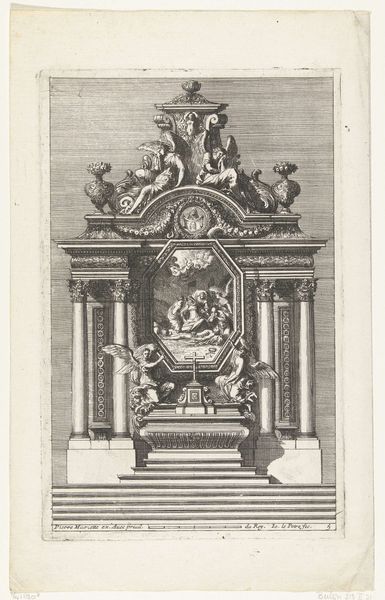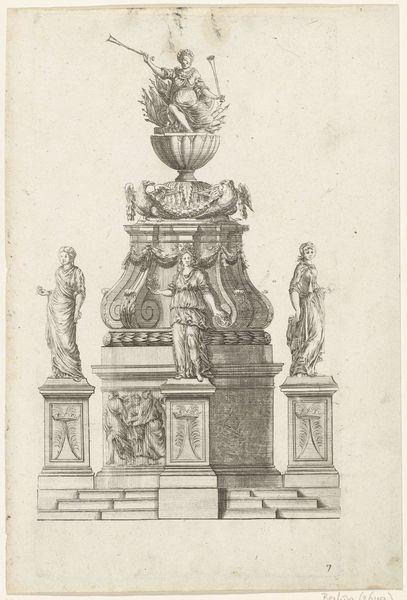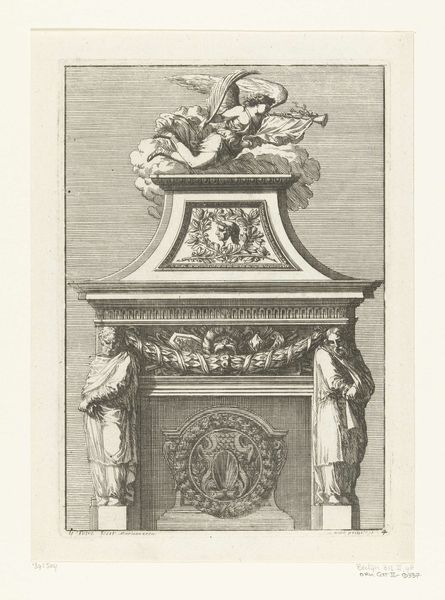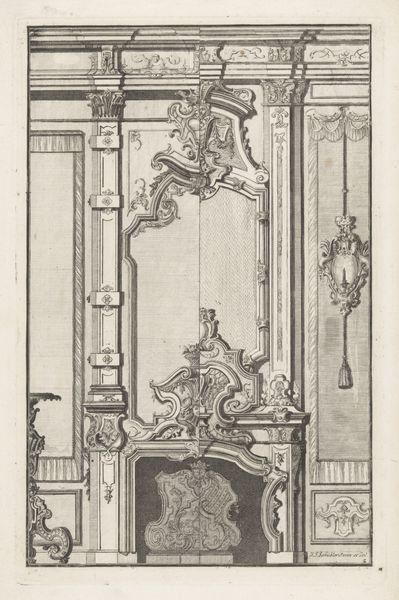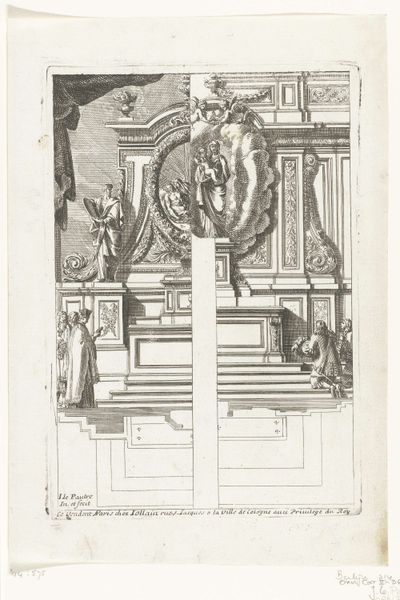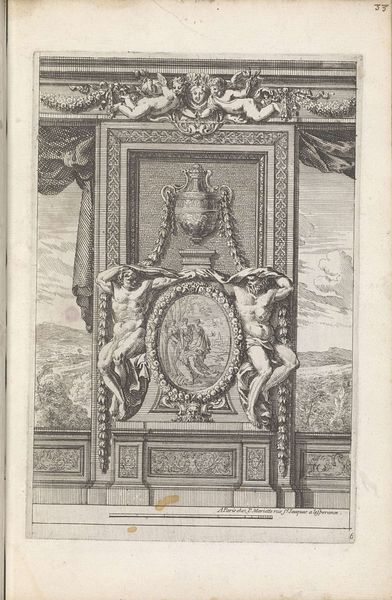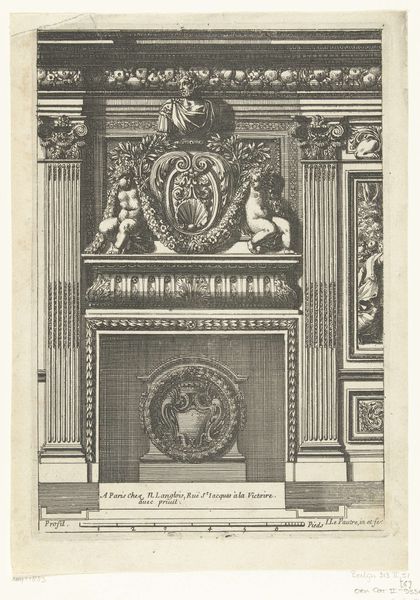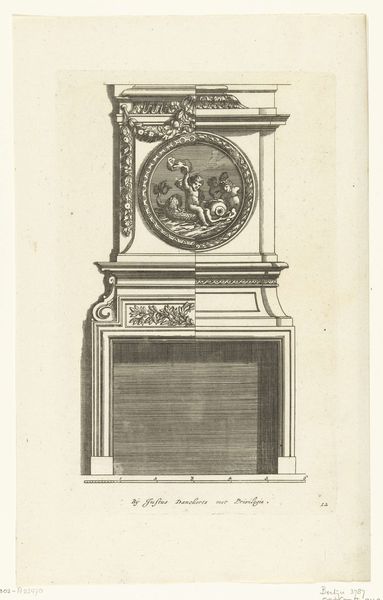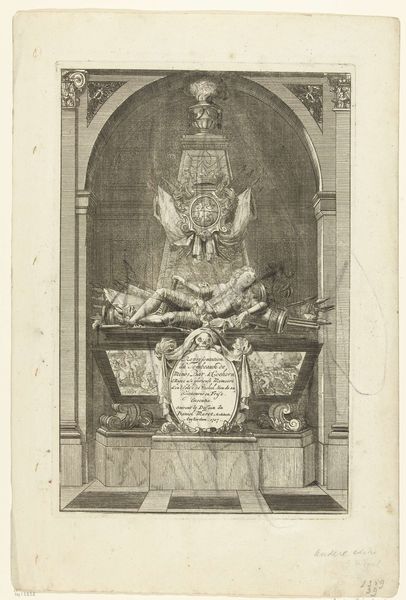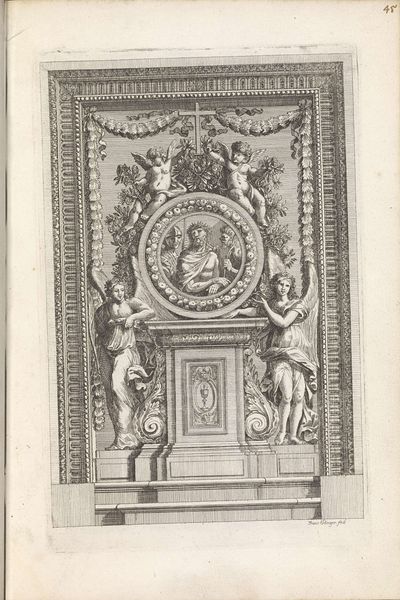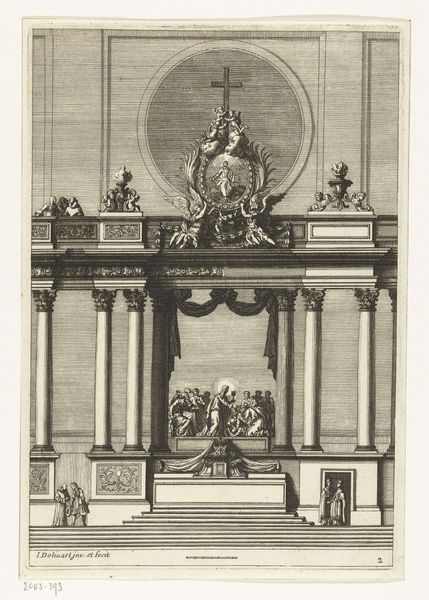
drawing, print, metal, engraving
#
drawing
#
baroque
# print
#
metal
#
pen sketch
#
old engraving style
#
form
#
engraving
Dimensions: height 234 mm, width 139 mm
Copyright: Rijks Museum: Open Domain
This drawing of a mantelpiece with variations, was created by Cornelis Danckerts I. The eye is immediately drawn to the cherub, a motif with a lineage stretching back to classical antiquity. In Roman art, winged infants, often called putti, were symbols of love and desire, closely associated with Venus and Cupid. As Christianity rose, these figures were reimagined as cherubs, celestial beings representing divine love and wisdom. Notice how the cherub here, though part of a domestic design, carries the weight of this dual heritage. It’s no longer a simple representation of earthly love or divine presence, but a complex symbol embodying both, reflecting humanity's eternal dance between earthly desires and spiritual aspirations. The cherub as it reappears through time, is like a cultural echo reverberating in our collective memory.
Comments
No comments
Be the first to comment and join the conversation on the ultimate creative platform.
